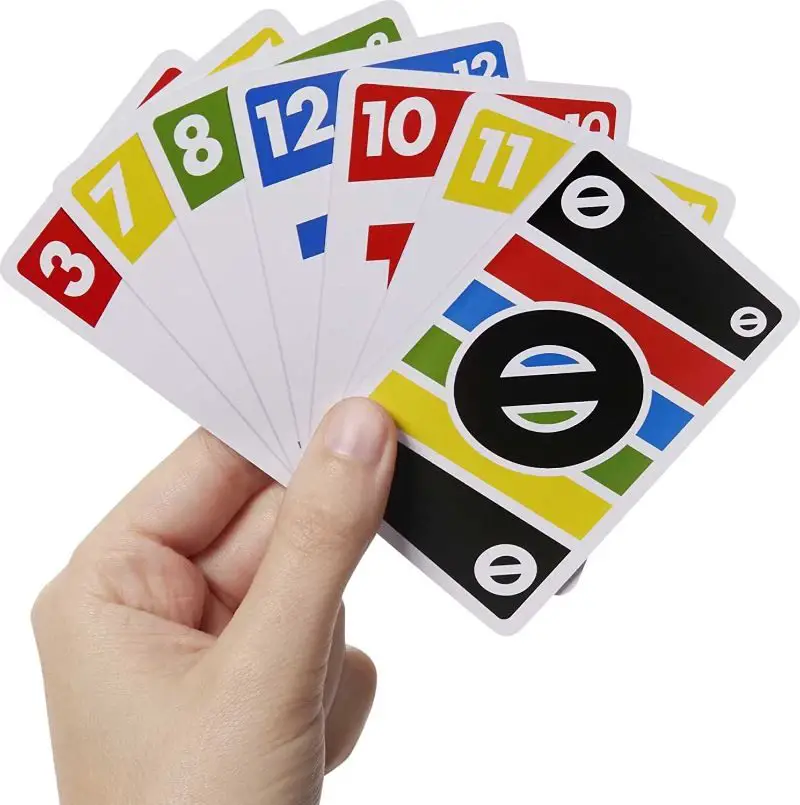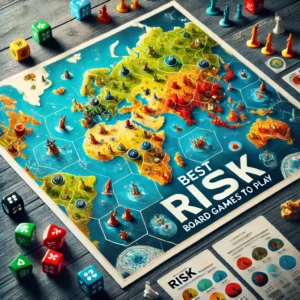Should I Play Phase 10?

Players: 2 – 4 players | Game Duration 30 – 60 mins |
Min. Age 8+ | Game complexity: EASY Genre: Card Games
Solo game mode: No | Co-op: No |
Online Version: No
Hate Rulebooks? Check out our condensed How to Play Phase 10 Rules Guide
What is Phase 10 about?
‘Phase 10’. This rummy-style card game is not just about luck; it’s about strategy, patience, and a bit of competitive spirit.
Phase 10 Gameplay and Mechanics
The objective of ‘Phase 10’ is to complete ten specific phases, each with its own set of requirements. These phases range from collecting sets of the same number to gathering runs of consecutive numbers. Each player works through these phases in order, but the catch is, you can’t move to the next phase until you complete the current one.
The game starts with each player being dealt a hand of cards. On your turn, you draw a card and discard one, aiming to complete the phase you’re on. Once you lay down your completed phase, you try to “go out” by playing off your remaining cards on your own or other players’ laid-out phases.
The first player to complete all ten phases wins, but the game can twist and turn unexpectedly, making for some thrilling moments.
Who is Likely to Love ‘Phase 10’?
- Families: ‘Phase 10’ is fantastic for family game nights. It’s simple enough for kids to understand (recommended for ages 8 and up), but also engaging enough for adults.
- Casual Gamers: If you’re not into heavy strategy games, ‘Phase 10’ offers a perfect balance of luck and strategy without being overwhelming.
- Party Goers: It’s a great game for social gatherings or parties. The rules are straightforward, making it easy for newcomers to join in.
- Rummy and Sequence Fans: If you love card games like Rummy or Sequence, ‘Phase 10’ provides a familiar yet unique twist.
What Makes Phase 10 Fun?
- Easy to Learn: The rules are simple, making it easy to get new players involved quickly.
- Strategic Play: While luck plays a role, strategic discarding and playing can give you an edge.
- Social Interaction: The game encourages interaction, laughter, and a bit of friendly competition, making it a great social game.
- Variability: No two games are the same. The order in which phases are tackled and the play styles of your opponents keep the game fresh and exciting.


Rules
Condensed How to Play Phase 10 Rules Guide for rulebook haters
Phase 10 Videos
User Submitted Videos
Submit your videos
Related Links
Best kids board games for ages 5 and above
Searching for the right kids board game can sometimes be tough., Children board games need to be fast to learn, interactive and easy to understand. We have selected some of the best kids board games for ages 5 and above…
Check out these 7 Wonders Game Expansions
Find out how these 7 Wonders Expansions add more 7 Wonders fun. We take a look at expansions to the base game as well as new standalone games such as 7 Wonders Duel and 7 Wonders Architect. 7 Wonders If…
Best Risk Board Games Variants For Risk Fans
Best Risk Board Games: Top Picks for War Gamers For those who love war games, Risk is a timeless classic that continues to be very popular. Whether you’re a veteran looking to explore new variations or a beginner diving into…
Why use Chaining Mechanic in board games
The “Chaining” mechanic is an engaging and strategic gameplay element where one action triggers a sequence of other actions or effects. It is a domino effect where one move sets off a chain reaction that can creates a powerful result.…
Learn about the Legacy Game Mechanic in Board Games
The ‘Legacy’ mechanic has transformed game design. This mechanic allows the game to evolve over multiple sessions, creating a rich, dynamic experience that is uniquely tailored to the players’ actions. What is the Legacy Game Mechanic? The Legacy mechanic is…




